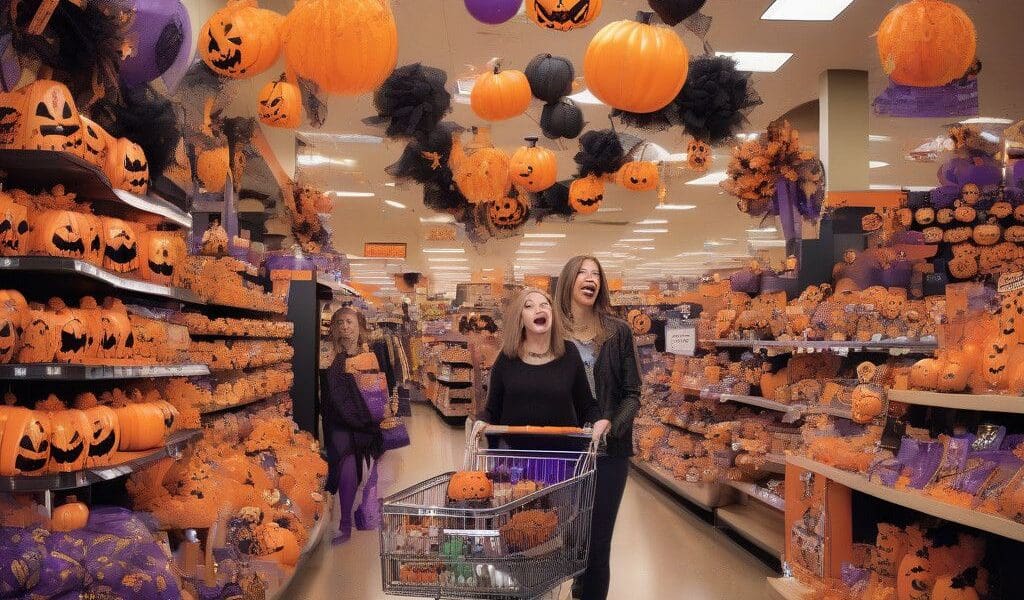As the haunting season approaches, a recent survey from the National Retail Federation (NRF) reveals some compelling insights into Halloween spending patterns. This year, the average Halloween shopper is projected to spend approximately $103.63, with total Halloween expenditure anticipated to hit a staggering $11.6 billion. This figure underscores not only the popularity of the holiday but also the evolving consumer behavior that retailers should be targeting.
Consumer Participation and Early Shopping Trends
What’s particularly noteworthy is that nearly 72% of consumers plan to celebrate Halloween this year. This significant interest reflects both traditional activities like trick-or-treating and modern festivities, such as Halloween parties and themed events. Among these consumers, the demographic most excited about the holiday is 25 to 34-year-olds, who appear to be influencing spending trends this year.
Interestingly, a considerable number of shoppers are getting an early start on their Halloween shopping. More than half of the consumers surveyed—56% to be precise—began their Halloween preparations before the calendar flipped to October. Retailers that recognize this trend and adjust their marketing strategies accordingly stand to gain a significant advantage. For example, promotional activities and marketing messages that target early shoppers can substantially boost sales in this lucrative period.
Diverse Categories of Spending
So where is all this money being spent? The NRF identifies several key categories where consumers are channeling their Halloween budgets. Traditionally, spending is divided into costumes, candy, decorations, and party supplies. Last year, costumes accounted for one of the largest shares of spending. This year, it appears that consumers are not only investing in themselves but are also preparing to provide a memorable experience for others, particularly with an increased emphasis on decorations and themed gatherings.
Costumes are expected to attract approximately 40% of total spending. This is indicative of a broader cultural trend: many consumers view Halloween as an opportunity for personal expression. From elaborate costumes to organic, sustainable choices, the variety is vast. Retailers can leverage this interest by showcasing diverse options that align with consumer values, including eco-friendly materials and locally-sourced products.
The Role of E-Commerce and Omnichannel Strategies
The rise of e-commerce continues to transform the Halloween shopping experience. Many consumers are opting to make their purchases online, appreciating the convenience and variety that digital platforms offer. Yet, it’s essential for retailers to adopt an omnichannel approach, integrating both physical and online shopping experiences.
This means that while online sales are likely to increase, brick-and-mortar stores also need to create immersive shopping experiences. Creating in-store displays that capture the Halloween spirit can draw in foot traffic, especially for consumers who prefer to make last-minute purchases. Interactive experiences, like costume try-ons, photo opportunities, or exclusive in-store promotions, can heighten engagement and encourage purchases.
Adapting Marketing Strategies to Consumer Behavior
Retailers should also adapt their marketing strategies to align with consumer behavior observed in the NRF report. With a significant portion of consumers shopping early, launching targeted campaigns in late September to early October could capture the attention of these eager shoppers. Sending emails, using social media ads, and promoting early-bird discounts could generate excitement and drive traffic before the main shopping rush begins.
Additionally, leveraging user-generated content on platforms like Instagram can provide social proof of product appeal. Encouraging customers to share their Halloween outfits or decorations can create a sense of community and build brand loyalty. Successful brands recognize the value of not only showcasing their products but also amplifying their customers’ voices.
Conclusion: Retailers Must Capitalize on the Spooky Season
As Halloween approaches, understanding consumer behavior is key to maximizing sales in this festive season. With an average spending of over $100 per shopper, and total spending projected to reach $11.6 billion, the opportunities for retailers are immense. By tapping into early shopping trends, promoting diverse product categories, and utilizing omnichannel strategies, retailers can effectively meet evolving customer needs.
The Halloween season offers a unique opportunity to engage with consumers in a fun and spirited environment. Retailers who harness these insights can transform this spooky holiday into a profitable venture.












